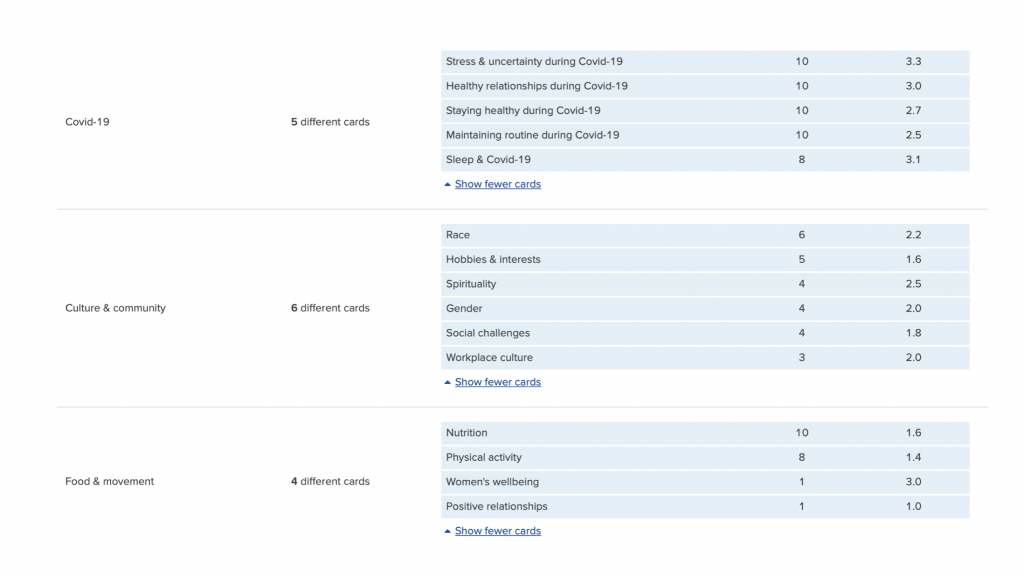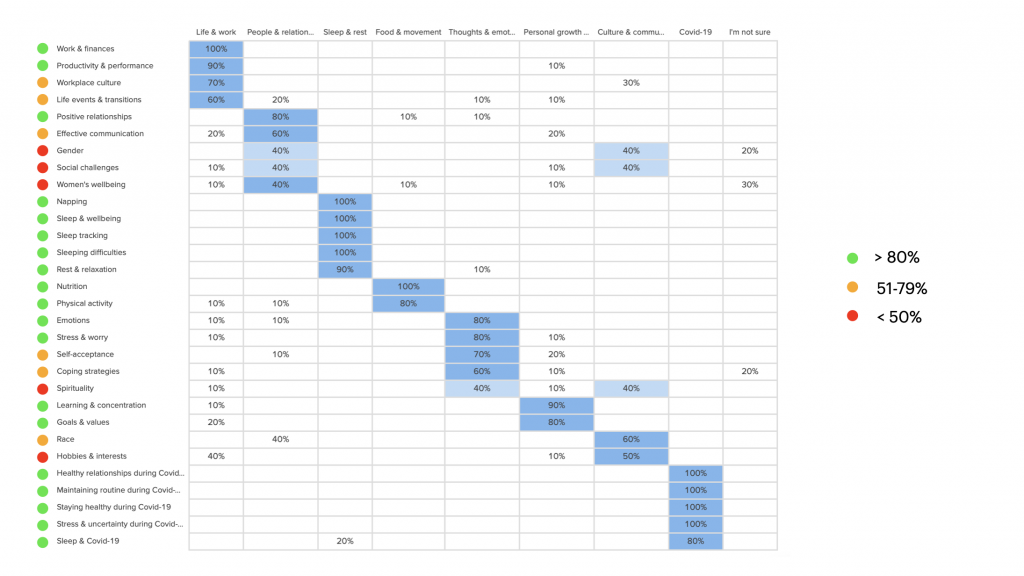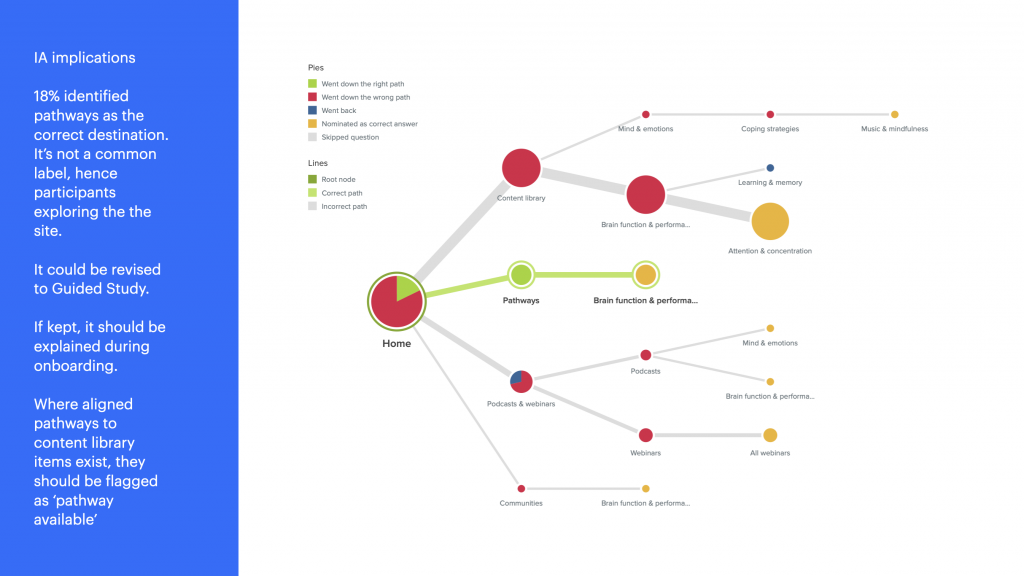
How do we organise our platform to perform well?
Methodology
Putting your users at the heart of your product sounds like an obvious choice. But in reality the pressure of time, budget and opinions lead to an architecture full of assumptions.
Whilst the visual design is an important part of the overall requirement to attract and engage your customer, the labels – especially in navigation are critical in helping identify the correct path and to achieve goals.
Your information architecture is the most critical element in your product – how it is organised and what those items are labelled. Don’t leave it to chance, take an informed approach.
Let us look at the process in more detail:
- Understand all features in the current (and planned) product and where they are currently organised
- Develop a card sort, where participants group items together and label them. There are three approaches – open, hybrid and closed
- Review the results to understand logical grouping and labels and where any differences in segmentation may occur
- Use the research insight to develop a new information architecture
- Develop a tree test, where participants are asked tasks to identify the correct path to an item
- Revise as appropriate until the product organisation fits above 80% of customers’ mental models
Outcome
Knowing how customers organise and group your content is a powerful exercise. It challenges orthodoxies and asks whether the organisation is designing for themselves, or that of customers.
Labels are important. They are the master terms for groups and can be considered brand elements. By using a research approach, these critical items can be more accessible to more, rather than overly clever or proprietary.
Once the new information architecture is developed it can be implemented in existing products or to help create new ones.
It is typical for an organisation to worry about taking a research approach to taxonomy: it questions the people and processes who are responsible. Another barrier is the perceived high cost of undertaking such work. Both can be addressed by including the organisation in the process and showing how the bulk of the cost is in recruitment and incentives. These can be as little as zero if the organisation recruit their own customers.
Timeline: 9 weeks
- 1 week – current product review
- 1 week – develop research
- 4 weeks – participant recruitment
- 2 weeks – research live
- 1 week – analysis and recommendations





Create your high-performance product
Put your customers at the heart of the process
Customers & Proposition
What are our customer’s needs and goals?
Are you making assumptions about who your customers are? Be more worthwhile to them by helping them achieve their goals.
We need to be innovative. Where do we start?
Do you need to create a standout idea but are struggling to get out of the current way of doing things?
How do we organise our platform to perform well?
Are you sure the taxonomy and information architecture are easy to use to reduce bounce and encourage return use?